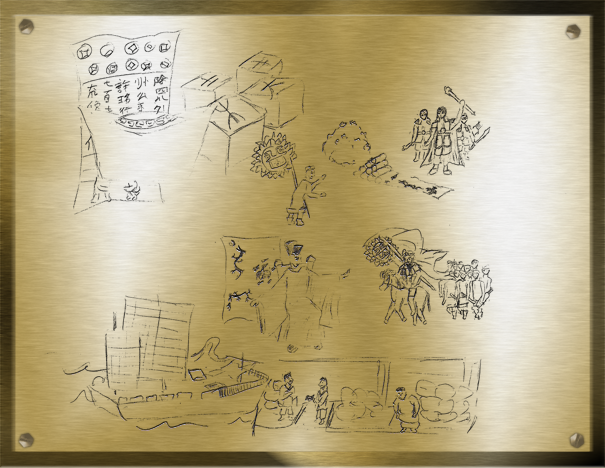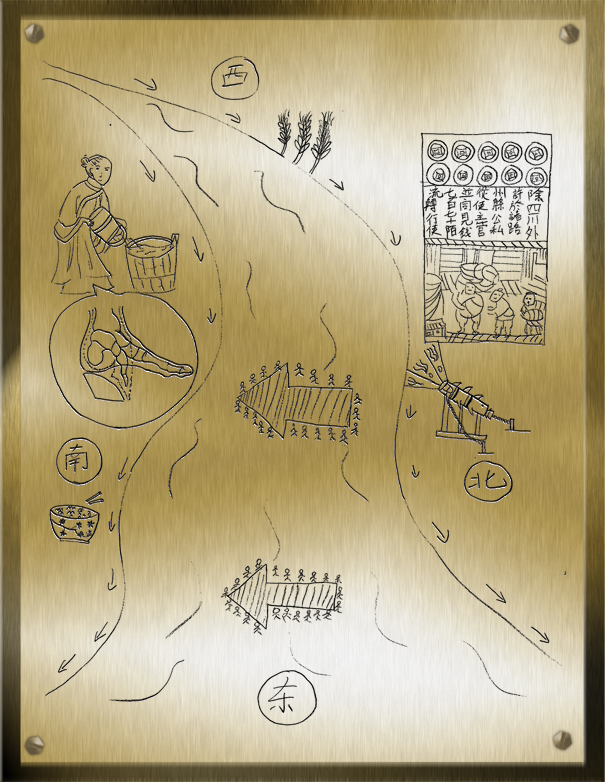| Time Period | Song Dynasty |
| Geographical Region | Southern China, Modern Day Hangzhou |
| List of Symbols |
|
My Golden Plaque for the Song Dynasty conveys the message that we are looking at a society that focuses more on economic development and less on military confrontation. The largest features of the plaque in the left corner feature a silver tael, moveable print type, and paper money, major features of the Song Dynasty. Both the silver bullion and the paper money were indicative of the Song focus on their economic power, while moveable type was a noteworthy invention during the Song Dynasty.
To the lower middle of the plaque, you see a Song Emperor (Gaozong) dressed in a typical manner for Song Emperors. Behind him is a silk tapestry of dragons and phoenixes, symbols of Chinese royalty and indicative of his command. The Song Emperor is shown calling a military general back away from battle. This general is Yue Fei, cloak billowing in the wind, who very much wanted to fight the invading Jurchen Jin to the north. General Yue Fei is shown on horseback with a book, and bearing a standard of the Song military, to differentiate him from his soldiers. His soldiers trudge behind him in the retreat, decked in typical Song military gear replete with swords and quivers.
The Song military is retreating from the force to the north, the Jurchens. These non-Chinese invaders wield maces and sport a different kind of armor to separate them from the Song troops. Here the military leader of the Jurchens is raising his weapon high above his head in a gesture of superiority as he looks upon the yearly indemnity that the Song must tribute to them. A Song ambassador is shown with a standard. He has a worried expression and submissive body language, gesturing toward the tribute of silver taels and bolts of silk (shown with the royal symbols of dragons and phoenixes; the Jurchens demanded symbols of royalty on their silk tribute) that lie at the Jurchens’ feet.
These bolts of silk and silver are both indicative of the strength of the Song economy, which is depicted in the bottom of the plaque. There is a Song merchant ship (a junk) pulling into harbor, with a not-to-scale depiction of a local marketplace. In a scene very similar to the one depicted on Song paper money, merchants deal with their goods packed up in round bags on the ground of the marketplace. One man can be seen presenting paper money currency to one merchant, who looks upon the offer with crossed arms.
Such was the story of the Song Dynasty, which focused on its economic power and strength, but quite literally turned their back on military confrontation. The Song preferred to pay a tribute to invading non-Chinese forces rather than fight, and in this way the life of the Song marketplace remained undisturbed and prosperous.
 FELIX YANG is a pre-med strategist who runs a story like a game of chess. More by Felix
FELIX YANG is a pre-med strategist who runs a story like a game of chess. More by Felix


